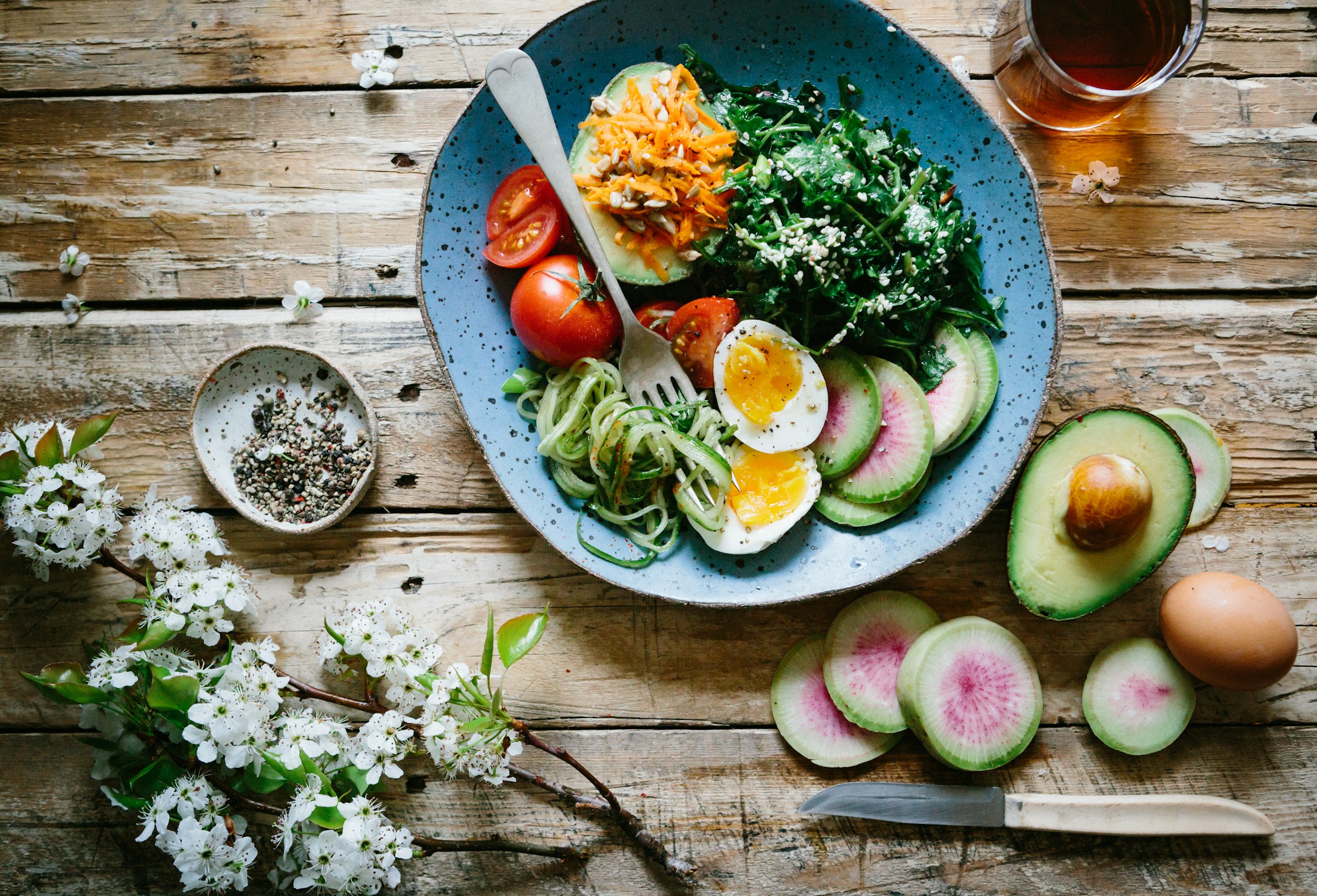Maintaining a vegetarian diet can be a rewarding lifestyle choice, and one that is becoming increasingly popular. However, balancing nutrient needs, particularly protein intake, can seem daunting. Not to worry, as you can easily craft a balanced vegetarian meal plan using the fantastic variety of seasonal produce available in the UK. Let’s explore how to build a meal plan that not only meets your nutritional needs but also supports local farmers and reduces your carbon footprint.
Understanding the Basics of a Vegetarian Diet
Before embarking on your vegetarian journey, understanding the basics of a vegetarian diet is an essential step. It’s a common misconception that vegetarian diets lack proper nutrition, especially protein. However, with careful planning, it’s entirely possible to meet all of your nutritional needs.
Also read : Can a Flexitarian Diet Reduce Your Carbon Footprint in the UK?
A typical vegetarian diet is rich in fruits, vegetables, grains, and legumes, which provide a range of essential nutrients. It excludes meat and seafood, but some variations may include eggs and dairy.
Of particular importance is protein. It’s a key component of a healthy diet, and it’s crucial for maintaining muscles, repairing tissues, and supporting immune health. Though meat is a common source of protein, there are many plant-based protein sources, like lentils, chickpeas, tofu, and quinoa.
In parallel : What’s the Role of Antioxidants in Preventing Age-Related Diseases in the UK?
The Importance of Seasonal Eating
Now that we’ve covered the basics of vegetarian diets, let’s delve into the benefits of seasonal eating. By harnessing the bounty of the UK’s seasonal produce, you can enjoy a diverse diet that is not only nutritious but also environmentally friendly.
Eating with the seasons allows you to enjoy the freshest, most flavorful produce, as fruits and vegetables are generally harvested at their peak and do not need to travel long distances. This also reduces your carbon footprint and supports local farmers and the local economy.
Moreover, consuming a variety of seasonal foods ensures your diet remains diverse and nutritionally balanced throughout the year. For instance, winter produces hearty root vegetables and citrus fruits, while summer offers an abundance of berries, tomatoes, and leafy greens.
Building a Balanced Vegetarian Meal Plan
Having set the stage with the basics of vegetarian diets and the benefits of seasonal eating, let’s now move into the practicalities of creating a balanced vegetarian meal plan revolving around UK seasonal produce.
You should aim to include a variety of food groups in your meals throughout the day. A breakfast could include oats served with almond milk, a sprinkle of seeds, and fresh fruit. For lunch, consider a salad with a variety of vegetables, coupled with a protein-rich plant food such as chickpeas or lentils. As a snack, opt for a piece of fresh fruit or a small handful of nuts. And for a dinner, try a hearty vegetable curry or a tofu stir-fry with seasonal veggies.
The key is balance. Each meal should provide a mix of carbohydrates, protein, and fat to fuel your body and keep you satisfied. Be sure to also include a source of vitamin B12, such as fortified plant milks or nutritional yeast, as it can be more challenging to get this nutrient on a vegetarian diet.
Incorporating Protein into Your Vegetarian Meal Plan
You might be thinking, “But where do I get my protein from?” This is a common question among new vegetarians. Luckily, there are plenty of ways to incorporate plant-based protein into your meal plan.
Legumes are a fantastic source of protein. Think lentils, chickpeas, and beans. They can be included in salads, soups, stews, or mashed up into a tasty bean burger.
Grains, particularly quinoa, brown rice, and whole meal bread also provide significant amounts of protein. You can use these as the base for your meals, adding a variety of seasonal veggies and a source of healthy fat, such as avocado or olive oil, to round out the meal.
Soy-based products, like tofu and tempeh, are also high in protein and can be used in a variety of dishes from stir-fries to scrambles. Other protein-rich foods include nuts and seeds, which can be sprinkled over salads, added to smoothies, or eaten as a snack.
As you can see, protein isn’t just for meat-eaters. With a bit of planning, it’s entirely possible to get all the protein you need from a vegetarian diet.
Exploring Seasonal Vegetarian Meal Plan Examples
To give you a concrete idea of what a balanced vegetarian meal plan with UK seasonal produce might look like, let’s explore some examples.
In spring, when asparagus and spinach are in season, you might start your day with a spinach and mushroom frittata made with eggs or a vegan substitute. For lunch, a fresh asparagus and pea salad with a lemon-tahini dressing would be refreshing and protein-rich. Dinner could be a hearty lentil stew filled with seasonal root vegetables.
Summer brings an abundance of berries and tomatoes. You could enjoy a breakfast smoothie made with mixed berries, almond milk, and a scoop of protein powder. A lunch of quinoa-stuffed tomatoes would provide a hearty mid-day meal. Dinner could be a vegetable stir-fry with tofu and a side of seasonal fruit for dessert.
In fall, apples and pumpkin come to the fore. You could start your day with a bowl of oatmeal topped with stewed apples and cinnamon. Lunch might be a pumpkin and lentil soup, while dinner could be a butternut squash and chickpea curry.
Winter offers hearty root vegetables and citrus fruits. A breakfast of porridge made with almond milk and topped with orange segments would start your day off right. Lunch could be a warming carrot and coriander soup, while dinner might be a hearty vegetable stew with dumplings.
Remember, these are just examples. Feel free to get creative with the seasonal produce available to you and adapt the meals to suit your tastes and nutritional needs.
Enjoying Variety with a Vegetarian Mediterranean Diet
One delightful way to enjoy a balanced vegetarian meal plan is through a vegetarian Mediterranean diet, known for its association with reduced risk of heart disease, type 2 diabetes, and aiding weight loss. This diet is rich in fruits, vegetables, grains, and legumes, with the occasional addition of eggs and dairy products, similar to a typical vegetarian diet.
You can easily adapt the Mediterranean diet to include UK seasonal produce. Start your day with a breakfast of whole grain toast topped with avocado and served with a side of fresh fruit. For lunch, you could prepare a hearty lentil soup, served with a slice of whole grain bread drizzled with olive oil. And for dinner, consider a spinach and feta pie paired with a fresh salad.
Following a plant-based Mediterranean diet doesn’t mean you have to give up sweets. Instead of heavily processed desserts, opt for fresh fruits or a handful of nuts and seeds. And remember, the native olives and extra virgin olive oil that characterise the Mediterranean diet are rich in heart-healthy monounsaturated fats. You can drizzle olive oil on salads, use it in cooking, or even enjoy a small amount with bread as a snack.
Incorporating a variety of seasonal produce into your Mediterranean diet not only keeps your meals exciting and flavourful but also ensures you get a wide range of nutrients. For example, sweet potatoes, available in autumn, are an excellent source of vitamin A and can be baked, mashed, or turned into soup.
Adding Convenience with Easy Week Prep
A crucial strategy to maintaining a balanced vegetarian diet is meal prep. Preparing your meals for the week makes it easier to stay on track with your diet, reduces the temptation to order takeout and can also save time and money.
To start your meal prep week, you need to plan your meals around the seasonal produce available. Then, make a shopping list of the ingredients you need. Try to include a variety of fruits, vegetables, grains, legumes, and plant-based proteins in your list.
Once you’ve done your shopping, dedicate a few hours over the weekend to prepare your meals. Cook grains and legumes, chop vegetables, prepare sauces or dressings, and portion out snacks like nuts and seeds. Store everything in airtight containers in the fridge or freezer.
For example, you could prepare a big batch of porridge for your week’s breakfast, topping it with different fruits and nuts each day for variety. Lunch could be a salad jar with layers of chickpeas, fresh vegetables, olives, and dressing that you just shake up and eat. Dinner could be a sweet potato curry that you reheat and serve with fresh greens.
Keep prep week easy by choosing simple recipes and using convenient cooking methods, such as roasting or slow cooking. Remember to balance your meals with carbohydrates, protein, and healthy fats to keep you satisfied.
Conclusion: Embrace the Bounty of UK Seasonal Produce
Creating a balanced vegetarian meal plan using UK seasonal produce is not only possible but also enjoyable and rewarding. It allows you to eat a variety of delicious, nutritious foods, support local farmers, and reduce your carbon footprint. Whether you’re following a vegan diet, a plant-based diet, or including some dairy and eggs, there’s plenty of room for creativity and personalisation.
From a protein-packed breakfast to kick-start your day, a fibre-rich lunch to keep you going, and a satisfying dinner to end your day, every meal can be a celebration of the UK’s seasonal produce. So, whether you’re already a vegetarian or considering making the transition, why not embrace the bounty of UK seasonal produce in your meal plan? It’s a step towards a healthier diet and a more sustainable lifestyle.











